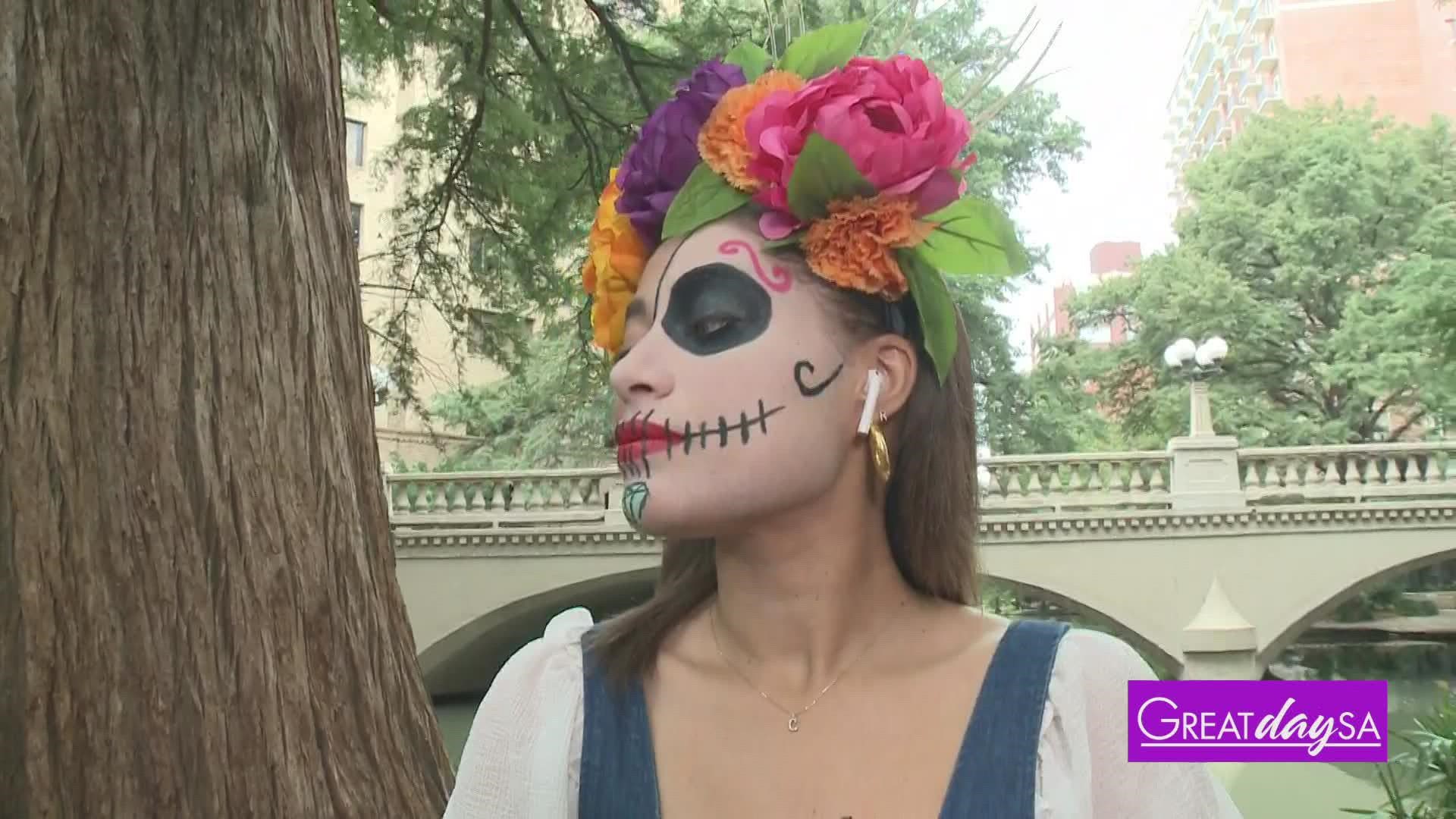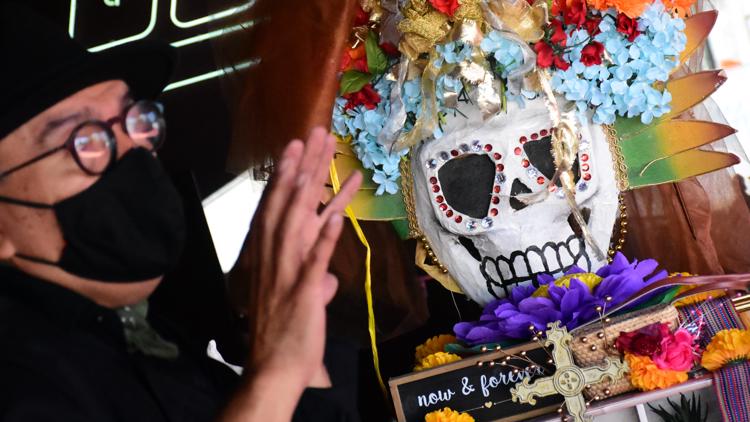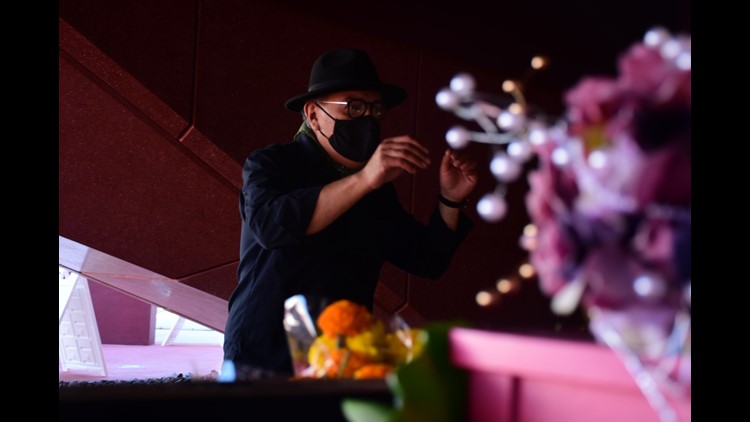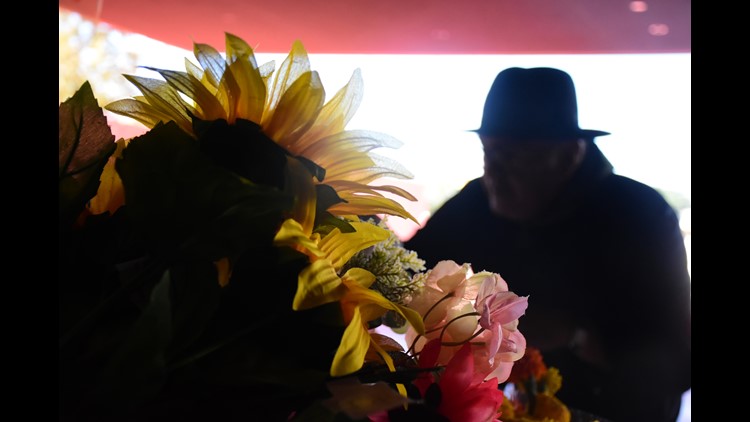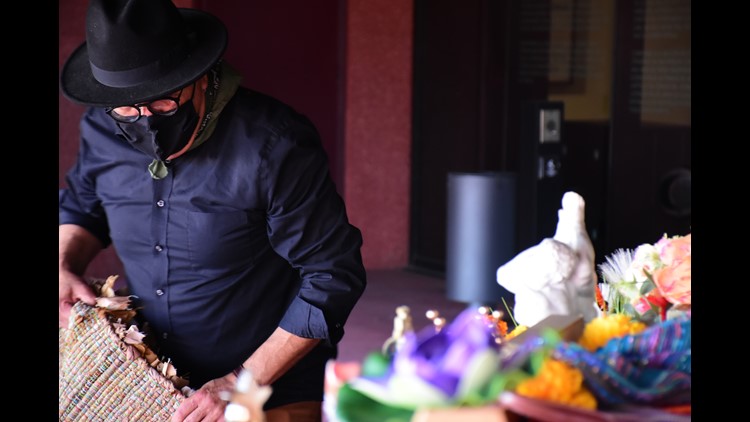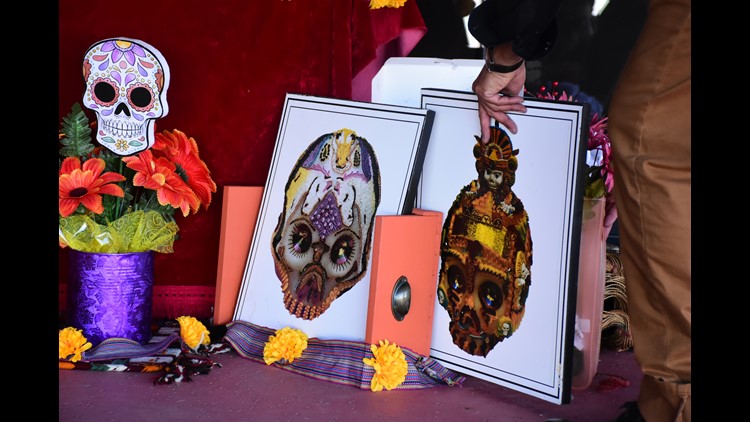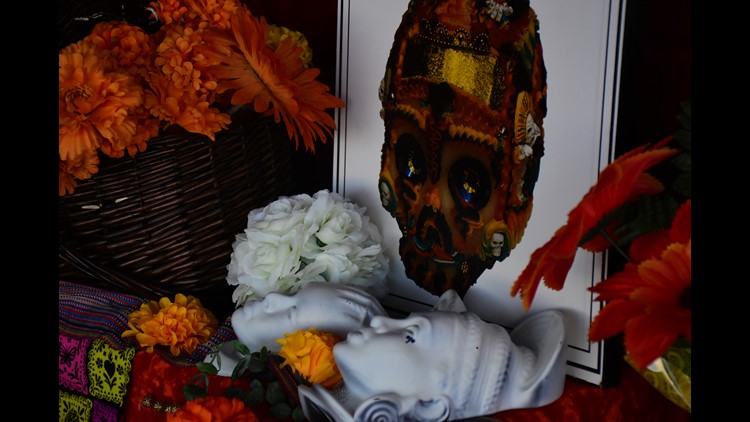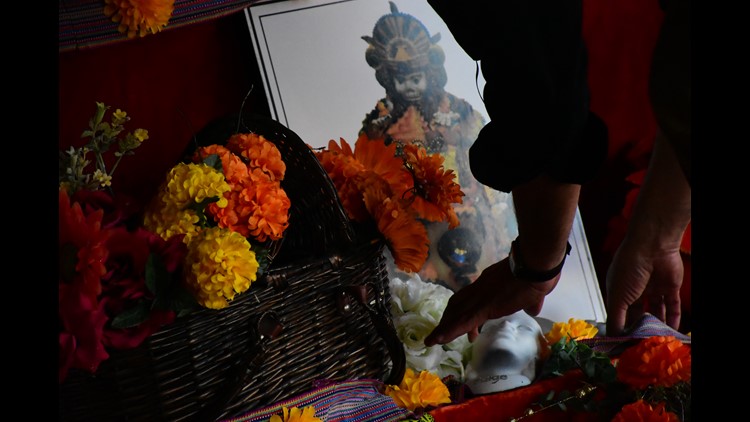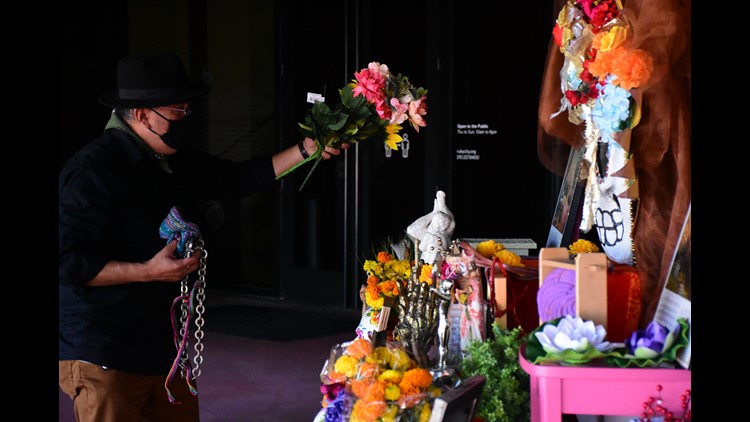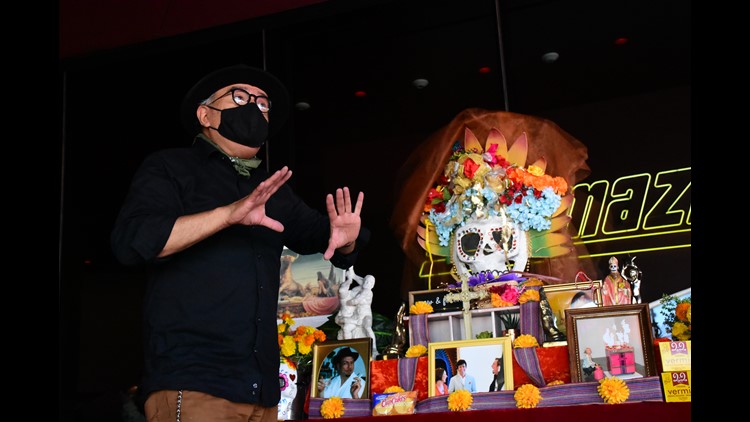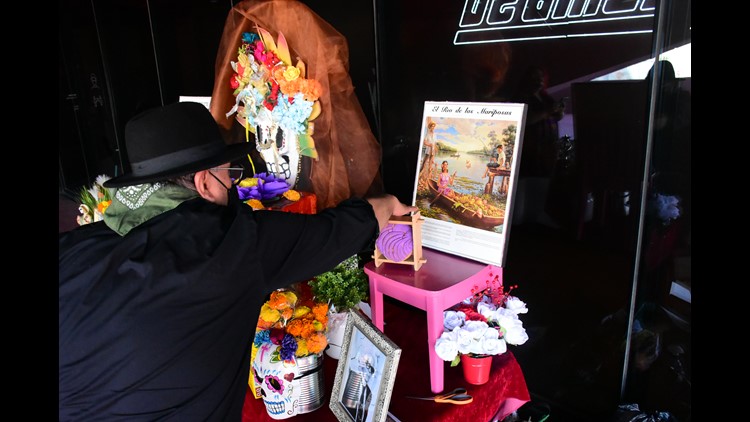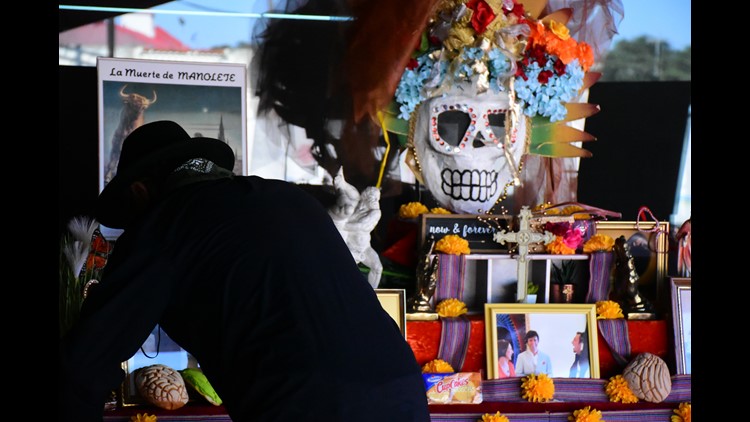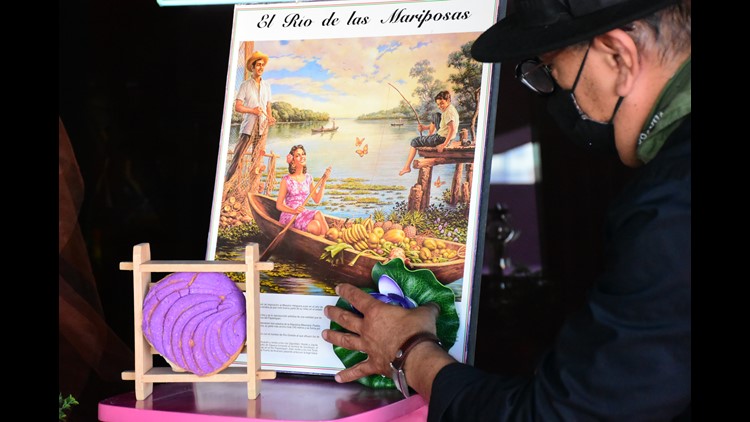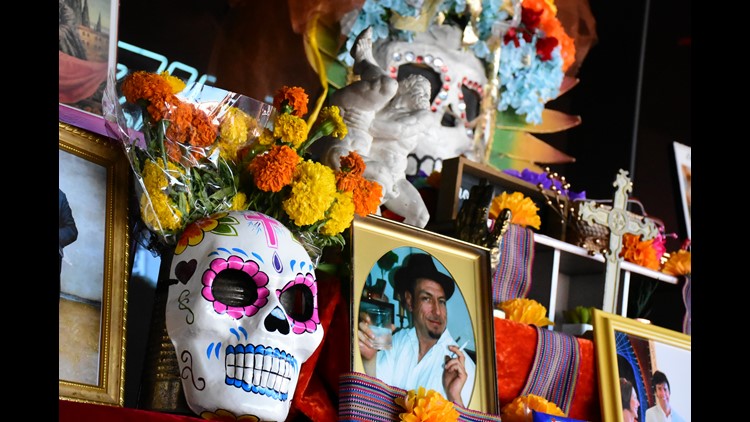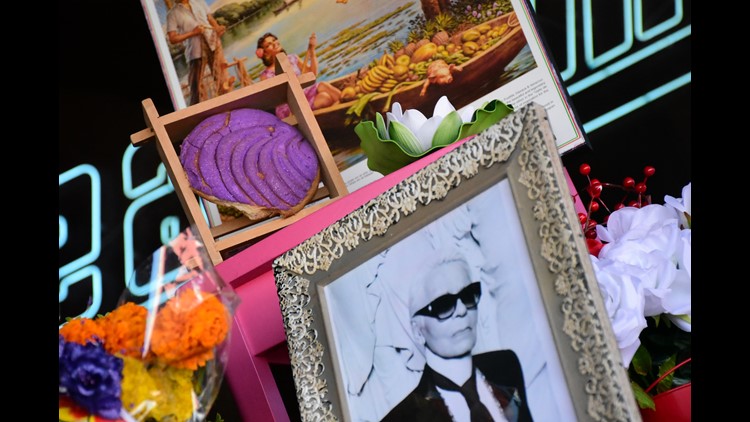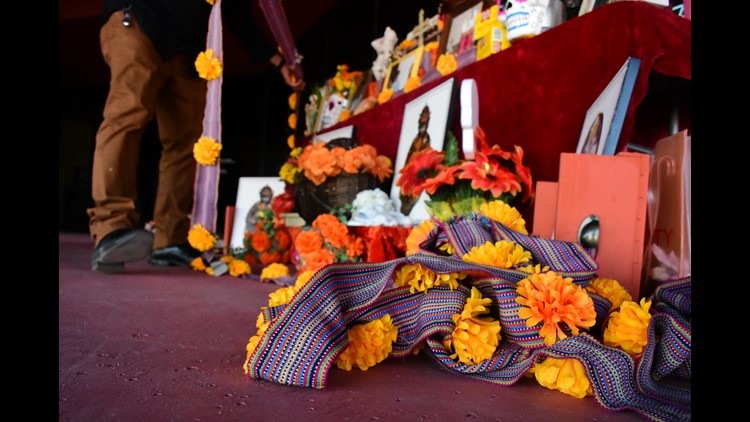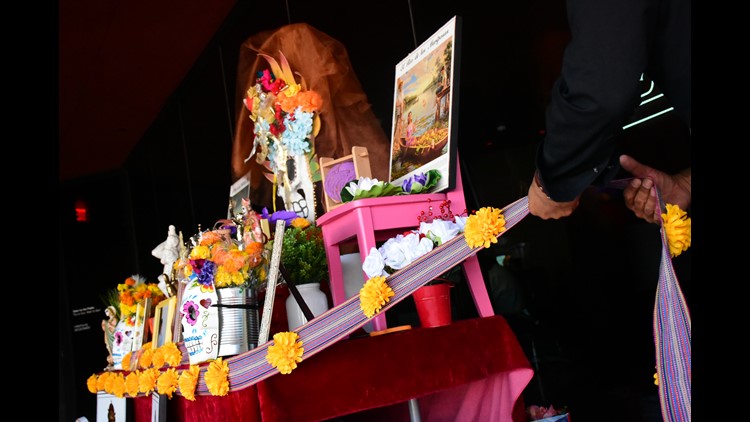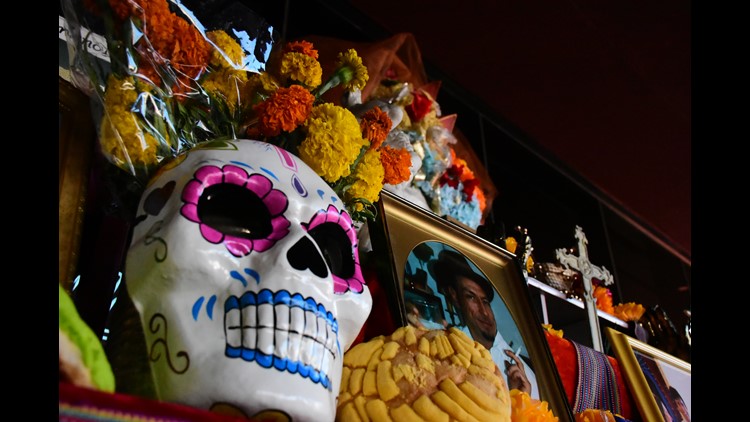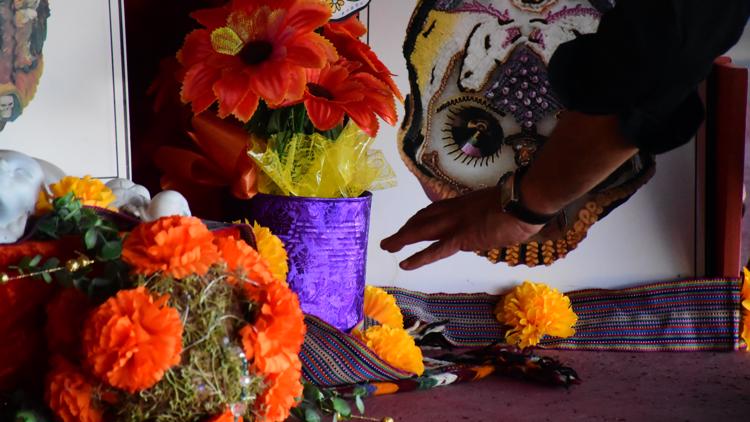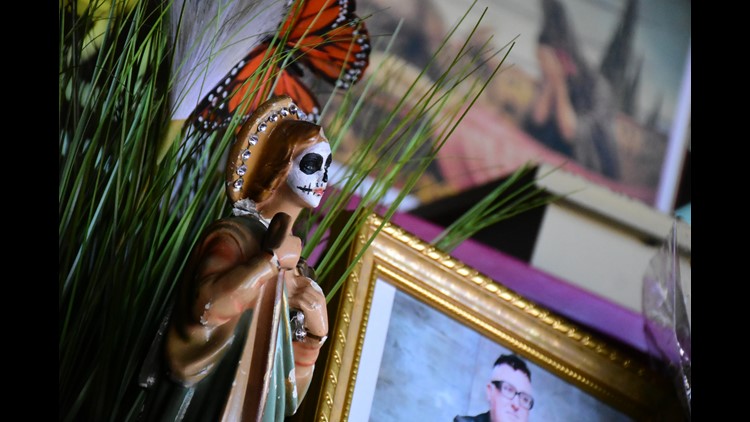SAN ANTONIO — When it comes to creating a Día de los Muertos ofrenda, or altar, the process is as important as the result. Picking what elements to include are hints of how we remember those who have passed on, and how they’re placed indicates how those people are to be remembered.
Agosto Cuellar knows a thing or two about process. It’s process that fuels the San Antonio artist as he probes auctions, thrift stores, and garage sales for the inspiration to create singular garments and outfits from recycled materials.
“All these things may be someone’s trash, but when you put it together it becomes art,” Cuellar said.
His signature “rasquache” style, in which things of seemingly little value are given new life, has taken Cuellar to fashion shows in Paris and New York.
But this month finds him back home, creating an ofrenda at the Southtown gallery Ruby City using items and artifacts which pay tribute to a handful of San Antonio artistic institutions. It’s on display through Nov. 2, the date reserved for Día de los Muertos.
“It is personal,” Cuellar said about the act of organizing an altar. “You can go all over the place and find stuff, but when you really come down to making a personal ofrenda, it’s about stuff that that person loved, that person used, that when they were alive they made them happy. I picked out a few things that I think would make them happy and what would be honoring them, and honoring their lives.”
PHOTOS: San Antonio designer repurposes trash to create vibrant Día de los Muertos ofrenda
It only took a few hours on a brisk Saturday morning for Cuellar to ostensibly complete the colorful outdoor ofrenda – complete with flowers, crosses, pan dulce and skull motifs – though he was still eagerly looking for places to make it even more robust. Even when it seems every inch had been used, Cuellar found a new spot to place a trinket, a figurine, a work of art.
The longer you examine Cuellar’s altar, it seems, the more there is to discover. Front and center are photos of well-known figures in the local arts community who have passed away, including Katie Pell and Chuck Ramirez, as well as renowned collector and advocate Linda Pace.
Cuellar, himself an Alamo City arts fixture for years, adorned those photos with items that jogged his memory of them. That’s why visitors will spot a pair of ruby-red, heart-shaped glasses hanging on Pace’s photo (“Linda loved red”); some boxes of dry vermicelli next to Pell (“She embraced the Latina culture, would come over and say, ‘I have fideo’”); and a sleeve of sugary, sunset-colored snacks sitting by Ramirez (“Chuck, he would love cupcakes, and orange is just the color I remember him being”).
Taking the hometown dedication even further, Cuellar said everything on view in the ofrenda was sourced in San Antonio—and only in San Antonio.
“I tried to connect certain things of what I remember and what I know,” Cuellar said. “Of course, other people have other memories of them, but this is my memory. And that’s how I came to identify all these things.”

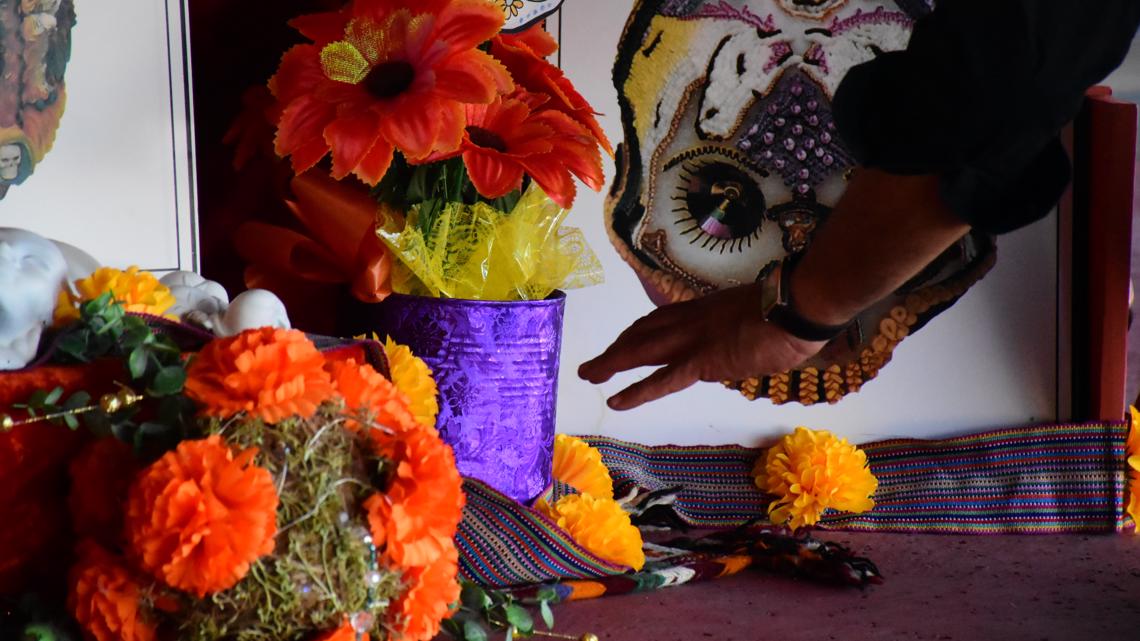
In between tinkering with the placement of some ribbon, the designer reflected on how his collaboration with Ruby City brings things full circle. To a certain degree he can root his artistic persona in his curiosity about those ofrendas, and to his grandparents teaching him to create interesting works out of existing materials when he was still a young boy. That work would eventually help him fulfill his dreams of showing off his art under the bright lights of Paris and New York.
“I did grow up with altares, I think they were part of my cultura since I was a little kid,” he said. “My grandmas on both sides of the family always had altares. Some of them stayed up year-round and they weren’t just for Day of the Dead; they’d be up to honor someone that passed, someone in the family. And it always made me curious about what those things meant.”
Decades later, Cuellar has been doing this for so long that some of the many pieces he’s collected and repurposed have found their way to him instead of the other way around, like a small statue that he said was sold to him by a family who spotted him one day at the laundromat.
Nonetheless, he said there are a few new additions he bought for this particular project, though he has trouble picking them out. You can imagine why: They’re already part of his collection, transcending what they were in the trash and paying homage to Cuellar’s own inspirations in the process.
“This is a way to give thanks and be thankful that I’m still standing here. Because I could very well not be here, and I’m grateful that I’m here standing and breathing to create something for someone else and give them the honor.”

